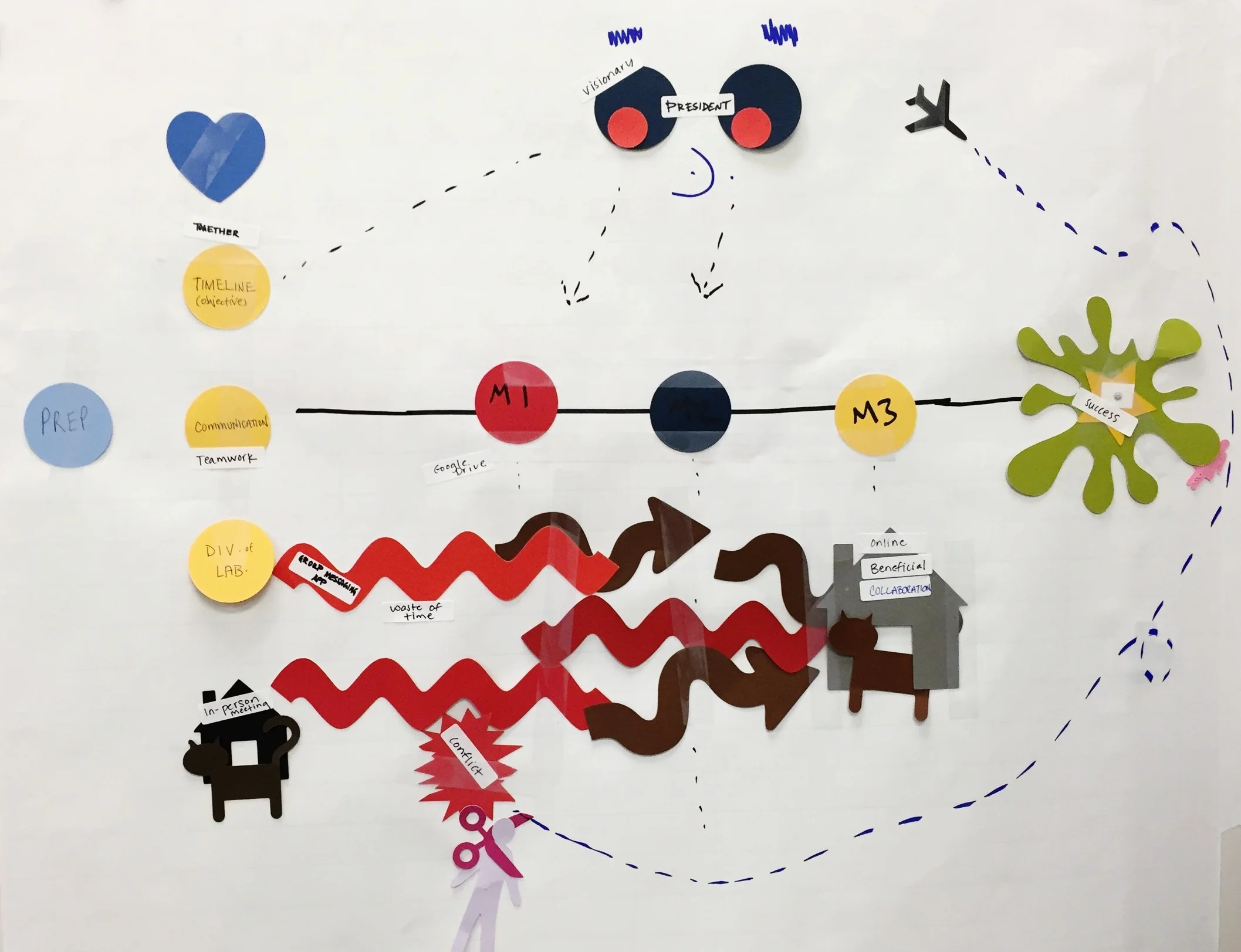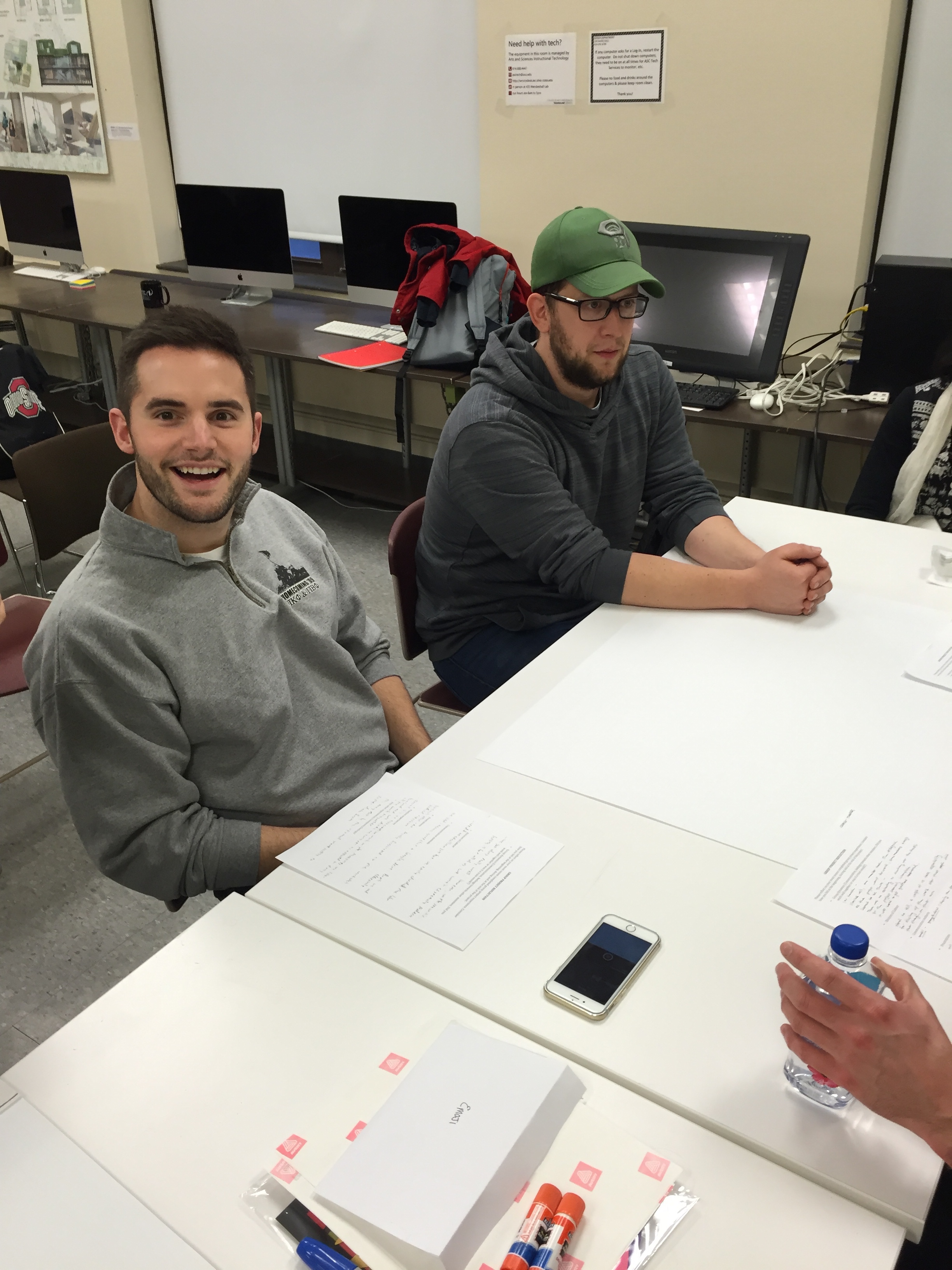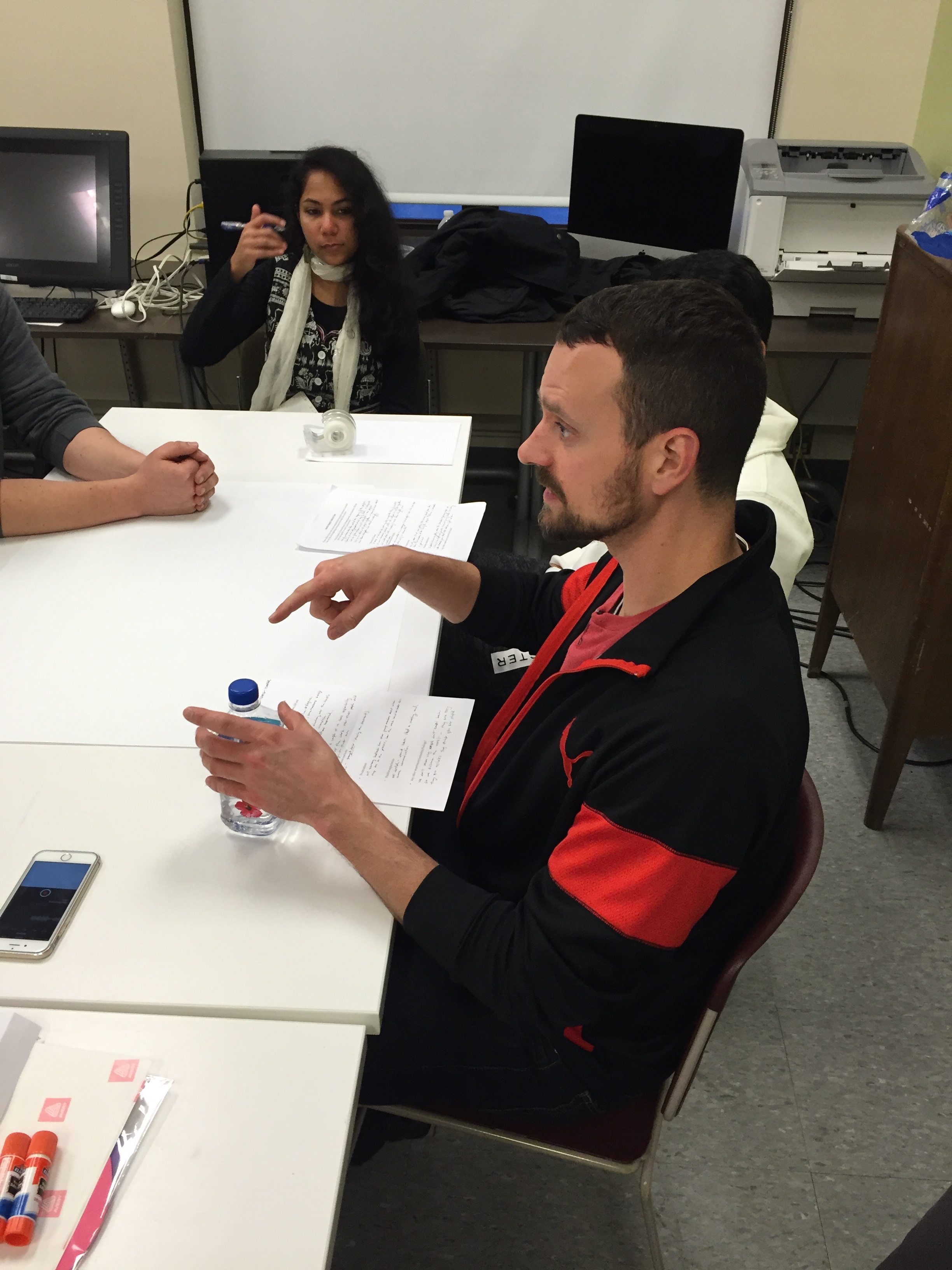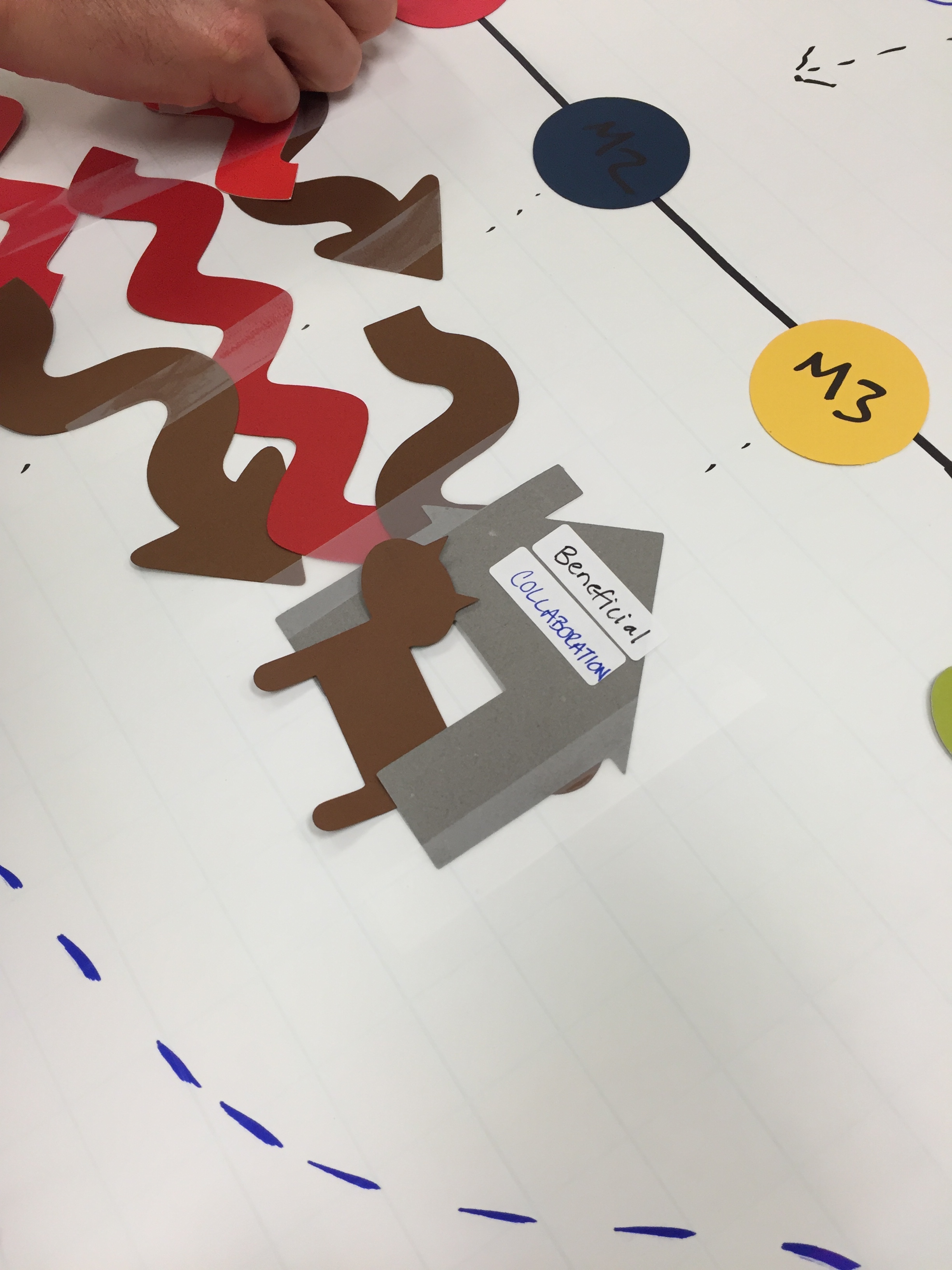A STUDY ON GROUP COLLABORATION: A CO-DESIGN PROJECT
This was the very first co-design studio class I was a part of where I began to learn about co-design and facilitating workshops. This project had me feeling the ropes in organizing workshops, working with a team, and facilitating workshops.
The research question that was being explored was "What does your ideal group project experience look like?"
Team members: Vikrin Wang (Industrial Systems Engineering), Zach Hyndman(MBA), Emily Bell(Design), Hemalatha Venkataraman (Design)
PROCESS: Phase-1
In order to prime the participants in the research study (priming refers to preparing participants on a given topic), we had assigned them a homework exercise where they had to jot down their experience surrounding their most recent group project. Some of the questions included their responses towards division of labor, group dynamics, communication methods, and positive and negative experiences. They shared these stories with one another.
PROCESS: Phase-2
Phase-2 in the process was to create a shared and collaborative map which reflects their 'ideal' group project experience. Their toolkit consisted of emojis, sharpies, paper shapes, words, and markers.
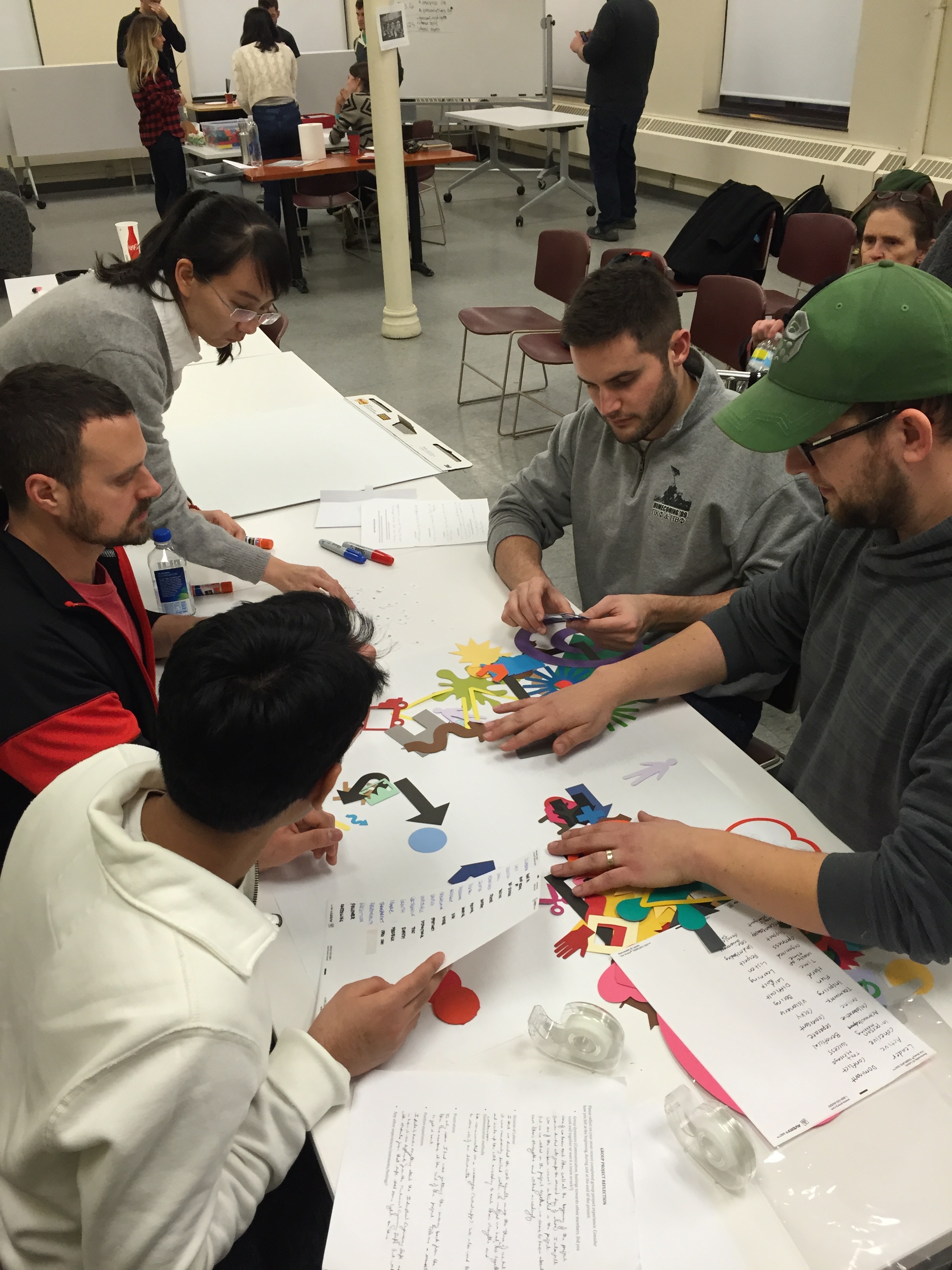
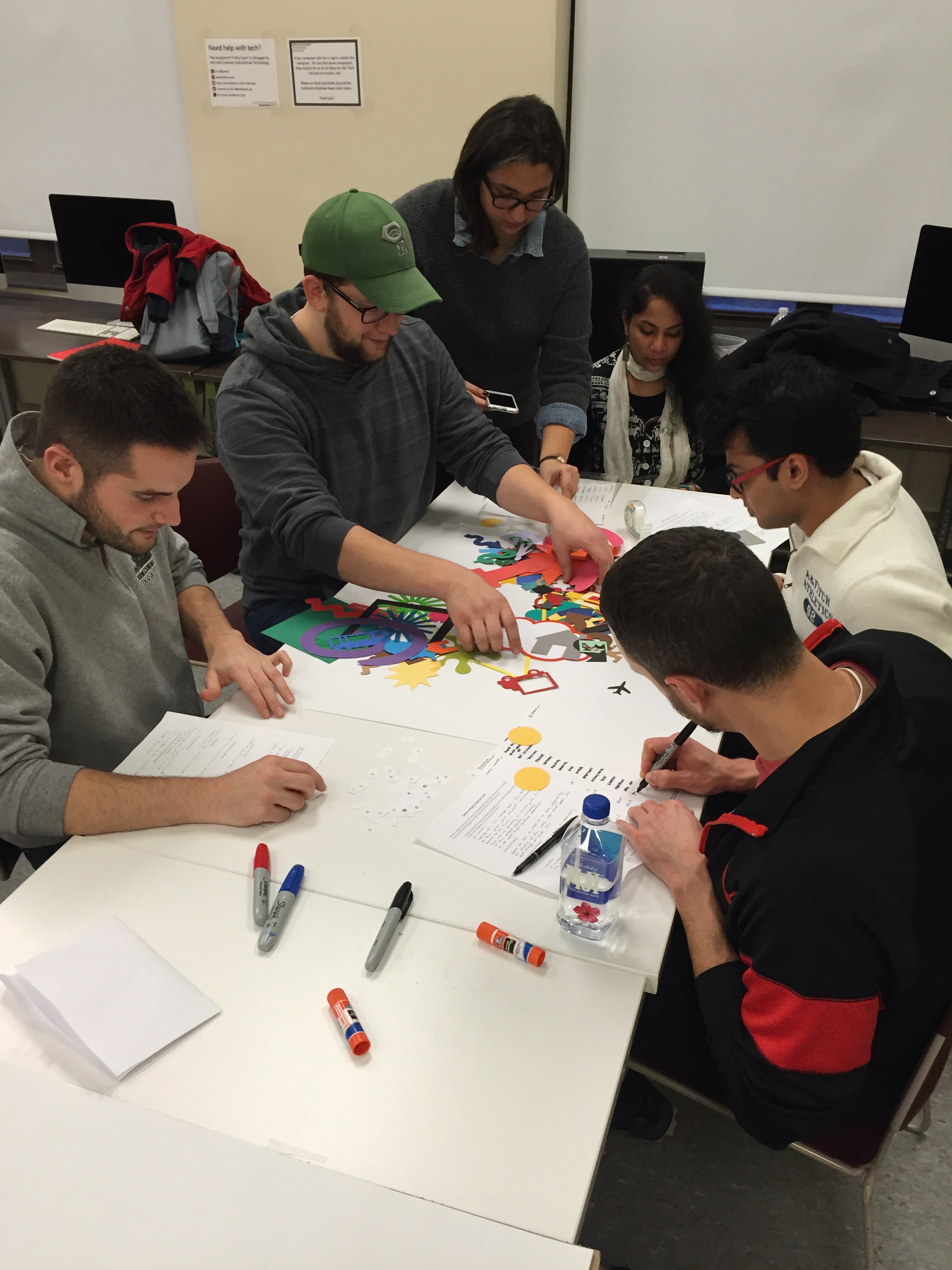
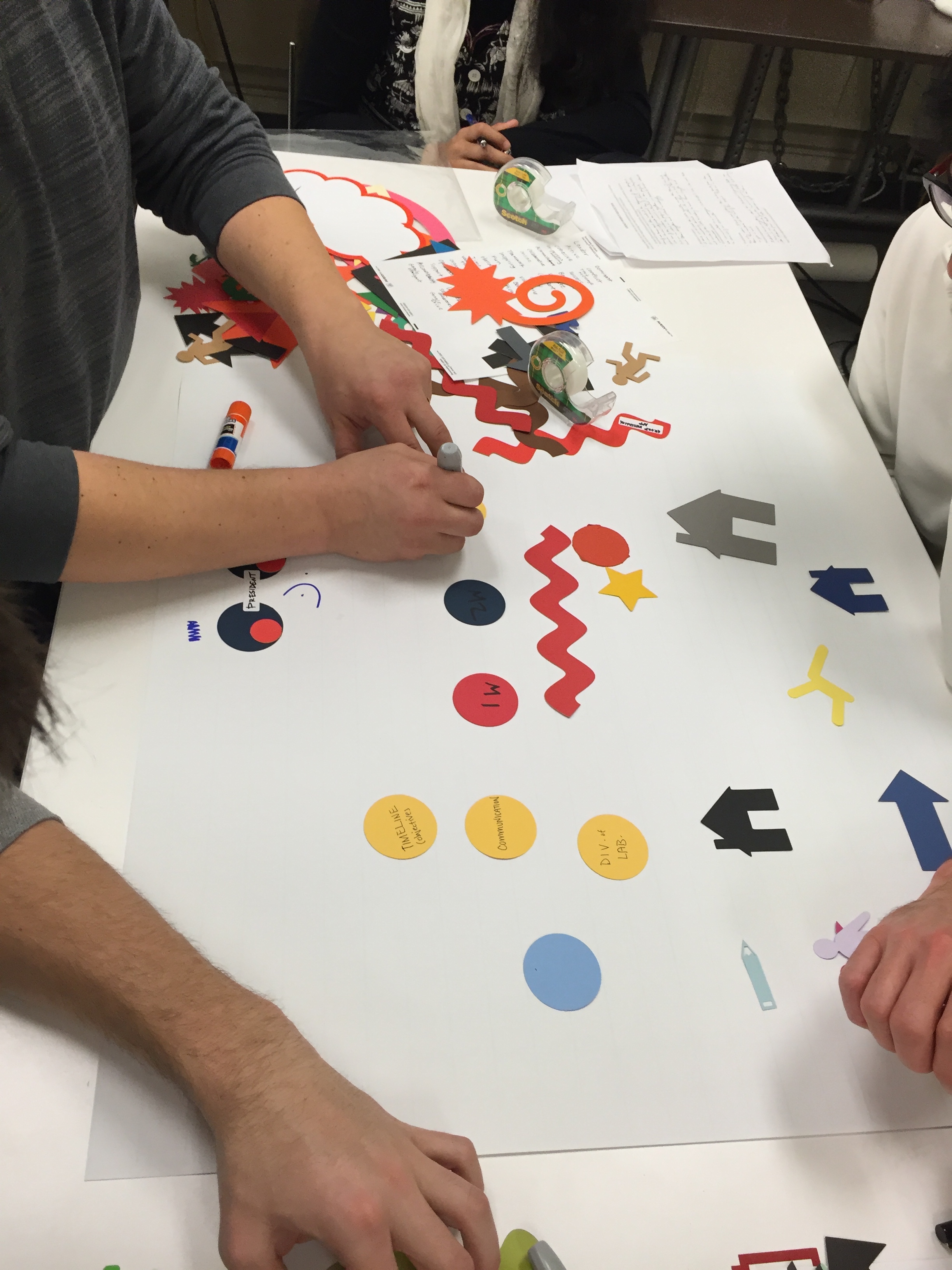
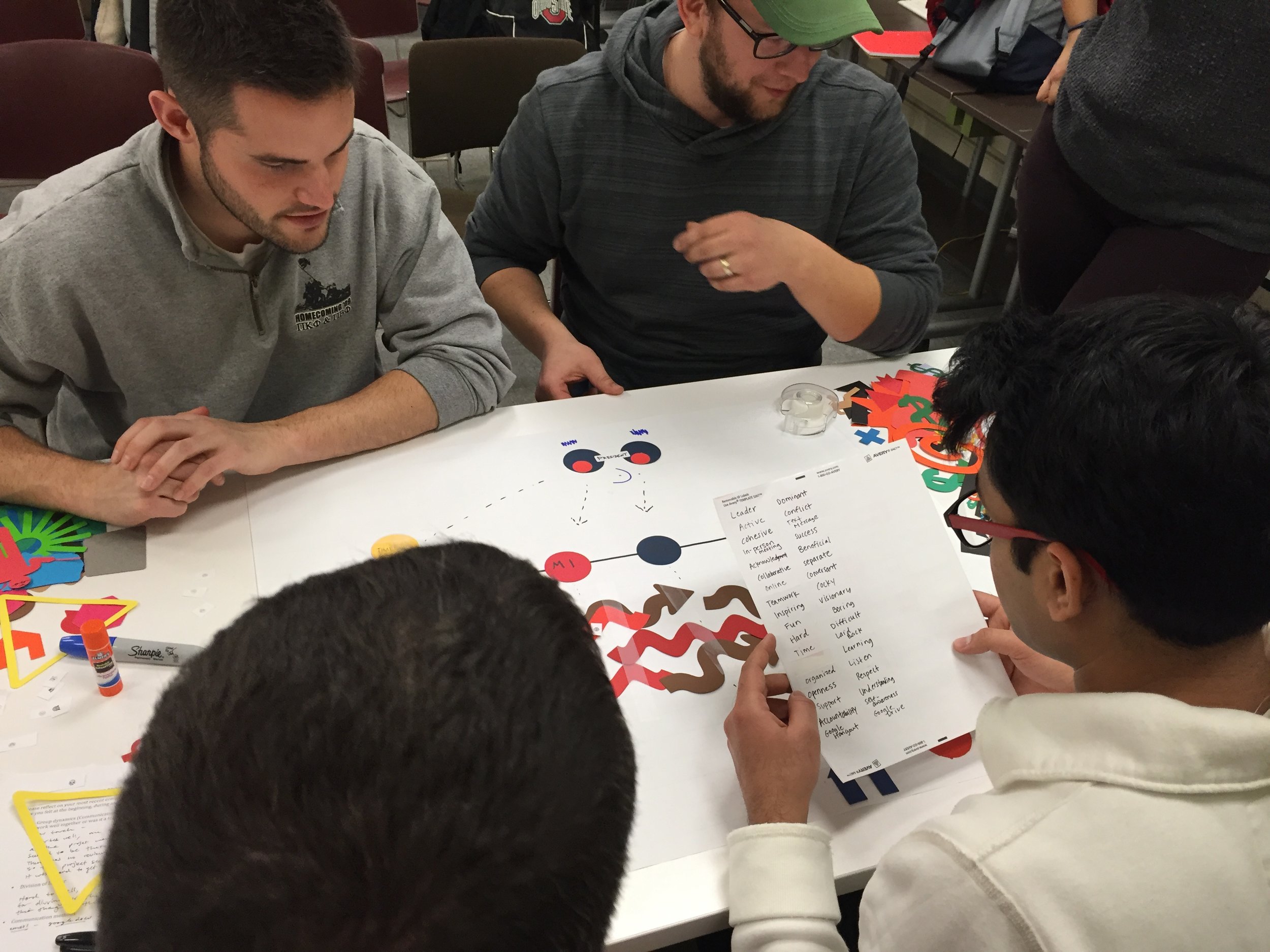
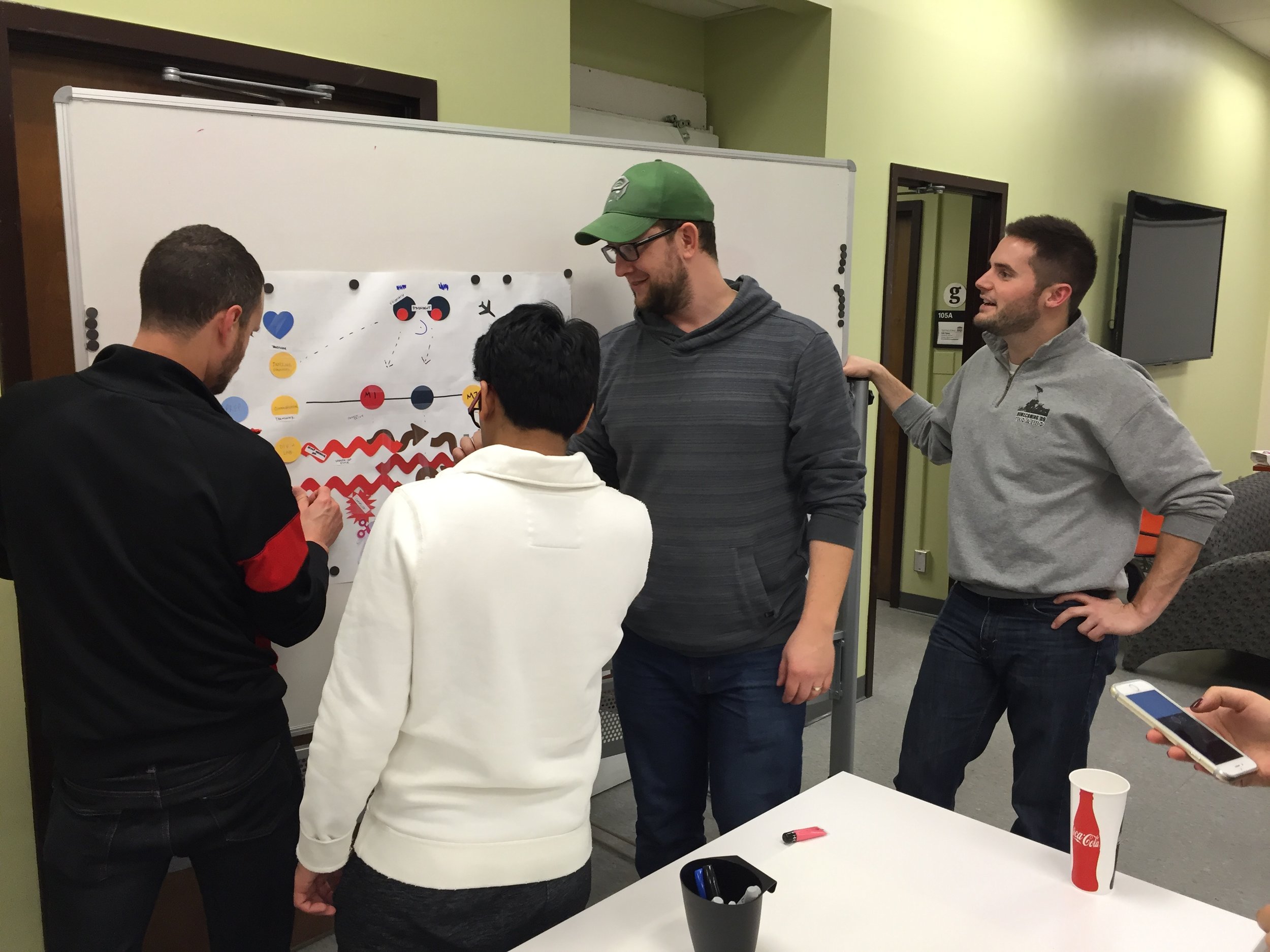
MAP THAT REPRESENTS THEIR IDEAL GROUP EXPERIENCE
The ideal group experience that was made by the participants is in the centre. Key points made: communication is key, virtual collaboration is preferred, define a leader to resolve conflict and keep group on track, and have goals to reach throughout total project work.
OBSERVATIONS FROM THE RESEARCH SESSION: OBSERVED GROUP DYNAMICS
Knowing each other is helpful
One participant took the initiative while some participants didn't voice their thoughts
Mutual respect improved teamwork
METHODOLOGY: WHAT WORKED AND DIDN'T WORK IN THIS PROCESS
Phase-1: Individual homework exercise
What Worked:
Got participants thinking about the positives and negatives of their last group project experience
Covered multiple facets of the experience: group dynamics, communication methods, outcomes
What Didn’t Work:
Negative language led participants
Didn’t emphasize the emotions they were feeling throughout the project
Phase-2: Group Exercise
What Worked:
Starting the exercise by sharing individual experiences gave everyone context and ideas
Variety of ambiguous shapes and words let them create without being led
Creating as a group provided insight into collaboration
What Didn’t Work:
Thinking about emotions was not emphasized enough
Groupthink caused some ideas to not be captured
Hovered over participants
OBSERVATIONS: TOOLKIT/EXPERIENCE
Pre-cut shapes vs. DIY shapes: Pre-cut is more likely to be used
Emojis need to be bigger
Knowing each other helped collaboration
More time would lead to more ideas
People like snacks and are motivated to participate when food is offered
Need to pilot test
LEARNINGS
We have to be cautious of wording and make sure we don't lead the participants
Stand back and let the participants work instead of crowding around them
Need to give clear instructions for intent of research activity
Learned to facilitate workshops, take quick written notes, audio recording the process, and also ensuring good documentation through photographs
Learning to work with team, and remotely working on the project while staying digitally connected
